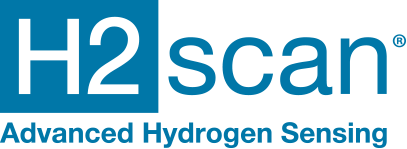
Intrinsically Safe (IS) Certification: A Critical Feature or a Strategic Benefit? Or Both?
The expanding hydrogen marketplace certainly is growing rapidly. Still, providers must be careful to ensure growth isn’t coming at the expense of safety and efficiency. In this environment, the certification of devices as Intrinsically Safe (IS) is not just a regulatory feature checkbox—it is a strategic benefit that can significantly impact an organization’s operational success.
The term “Hydrogen Ecosystem” is a collective term used here to encompass hydrogen in the “clean energy” industry, the “hydrogen economy,” and the myriad of industrial processes that monitor and measure hydrogen levels, where the volatility of hydrogen necessitates the highest levels of safety.
The “So What?” of Intrinsic Safety
Intrinsic safety (IS) is often touted as a mandatory feature for devices operating in hazardous environments. However, the common question to distinguish between a feature and a benefit is to ask, “So what?”
Since the hydrogen sector is so new and has yet to create a history of benchmarks and standards, stakeholders in the hydrogen ecosystem may question an IS certification’s value. Is intrinsic safety merely a feature, or does it hold deeper strategic benefits and value for the customer? The answer lies in understanding that IS certification is not just about compliance—it’s about ensuring the utmost reliability and safety of devices in environments where a single spark can lead to catastrophic consequences.
Hydrogen, alarmingly, is flammable at concentrations in air as small as 4% and becomes explosive between 13% and 75%. Given these properties, any equipment used in its production, storage, transportation or deployment must be designed to eliminate even the smallest risk of ignition. This is also true in industrial processes where the existence of hydrogen can be indicative of the same ignition risk. In addition, IS-certified devices will also provide predictive analysis and notification of an urgently required action.
Bottom line – IS hydrogen devices are engineered to prevent sparks or thermal effects that could ignite this highly flammable gas, making them indispensable in the broader hydrogen ecosystem – far more critical than just a mere product feature.
Beyond Compliance: The Strategic Benefits of IS Certification
While IS certification is indeed a compliance requirement in many industries (but not all), it also offers a host of strategic benefits. Companies that prioritize intrinsic safety in their equipment can gain a significant competitive edge in terms of cost savings and reputation. Saying “all of our equipment is IS certified” carries weight.
One of the most compelling strategic benefits is the reduction of risk. By utilizing IS devices, companies can operate with the confidence that their certified equipment will not become an ignition source. This certainty allows organizations to focus on optimizing other aspects of their operations rather than dedicating resources to additional safety measures.
The cost savings from avoiding the need for expensive protective equipment, such as explosion-proof enclosures and backup systems for disruptions, can be substantial.
Moreover, companies that emphasize IS certification in their operations are often perceived as leaders in safety. This not only enhances their reputation but also fosters trust among stakeholders, including customers, employees, vendors, regulators and investors. In industries where safety is paramount, this trust can translate into long-term business relationships, brand building, increased market share and employee loyalty. It can even lower insurance costs.
The Historical Context: A Foundation of Safety
The importance of intrinsic safety has deep historical roots. The concept of IS certification originated in the coal mining industry long ago, where the hazardous conditions posed by methane gas and coal dust required stringent safety measures.
In the early 20th century, even a simple flashlight could ignite a deadly and disruptive explosion, leading to the development of IS standards. The first IS ratings were issued in the 1930s, with formal standards emerging in the 1950s.
Today, these standards are upheld by recognized bodies such as Underwriters Laboratories (UL) in the United States, Canadian Standards Association, ATEX Directives in the European Union and IECEx internationally. These organizations and several others ensure that devices meet the rigorous requirements needed to prevent accidents in hazardous environments.
Conclusion: IS is a Feature, Benefit and Beyond
Intrinsic safety is more than just a feature—it’s a critical element of a company’s safety strategy and operational excellence. For industries dealing with hydrogen, the stakes are particularly high, making IS certification a required feature and a key to unlocking strategic benefits.
As the hydrogen economy continues to grow, companies embracing intrinsic safety will be well-positioned to lead the way, safeguarding their operations, personnel and future. Intrinsic safety, therefore, is not just a compliance check—it is a vital component of a comprehensive risk management strategy, delivering both safety, efficiency and a competitive edge in an increasingly hazardous and competitive world.
Intrinsically safe equipment from H2scan:
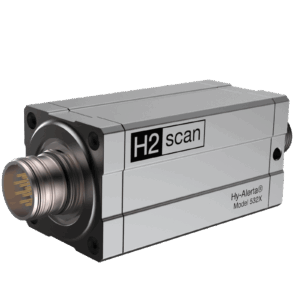 HY-ALERTA® 5320 Hydrogen Area MonitorProprietary technology for enhanced safety in environments where hydrogen leaks can prove hazardous. Easy to install on any surface, wall or ceiling for rapid, accurate hydrogen detection in any facility producing, storing or utilizing hydrogen.
HY-ALERTA® 5320 Hydrogen Area MonitorProprietary technology for enhanced safety in environments where hydrogen leaks can prove hazardous. Easy to install on any surface, wall or ceiling for rapid, accurate hydrogen detection in any facility producing, storing or utilizing hydrogen.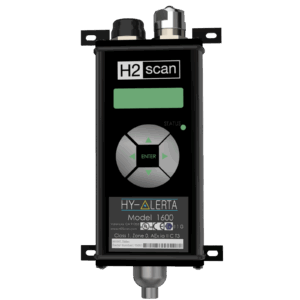 HY-ALERTA® 1600 Intrinsically Safe Area Hydrogen MonitorProvides hydrogen-specific leak detection and measurement for hydrogen concentrations as low as 4000 ppm and can be scaled to any concentration up to 5% hydrogen by volume, a range representing 10% to 125% of hydrogen’s low flammability limit.
HY-ALERTA® 1600 Intrinsically Safe Area Hydrogen MonitorProvides hydrogen-specific leak detection and measurement for hydrogen concentrations as low as 4000 ppm and can be scaled to any concentration up to 5% hydrogen by volume, a range representing 10% to 125% of hydrogen’s low flammability limit.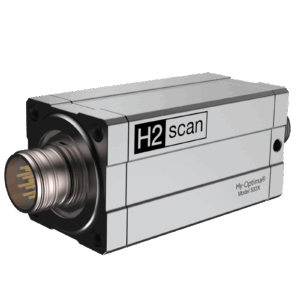 HY-OPTIMA® 5330 Analyzer Family Unparalleled reliability and durability to hydrogen in-line monitoring for diverse applications within the industrial processing sector, from chemical facilities and refineries to the burgeoning green hydrogen economy.
HY-OPTIMA® 5330 Analyzer Family Unparalleled reliability and durability to hydrogen in-line monitoring for diverse applications within the industrial processing sector, from chemical facilities and refineries to the burgeoning green hydrogen economy.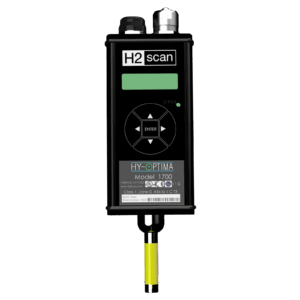 HY-OPTIMA® 1700 Intrinsically Safe Area Hydrogen Monitor HY-OPTIMA 1700 Series Intrinsically Safe In-line Hydrogen Process Analyzer Real-time hydrogen-specific process analyzers are designed for ease of use, interface flexibility and true process control. ATEX-certified Intrinsically Safe (IS) device configured to operate in background gas streams with up to 95% relative humidity and temperatures up to 60ºC
HY-OPTIMA® 1700 Intrinsically Safe Area Hydrogen Monitor HY-OPTIMA 1700 Series Intrinsically Safe In-line Hydrogen Process Analyzer Real-time hydrogen-specific process analyzers are designed for ease of use, interface flexibility and true process control. ATEX-certified Intrinsically Safe (IS) device configured to operate in background gas streams with up to 95% relative humidity and temperatures up to 60ºCAndré Marais is Executive Vice President of Sales and Marketing at H2scan Corporation, a world-class hydrogen sensor solutions provider. Marais leads global sales and marketing efforts to help clients safely implement hydrogen economy solutions through specialized measurement technologies. Marais is an experienced B2B commercial leader with extensive expertise in power utility, petrochemical and industrial vertical sectors.
